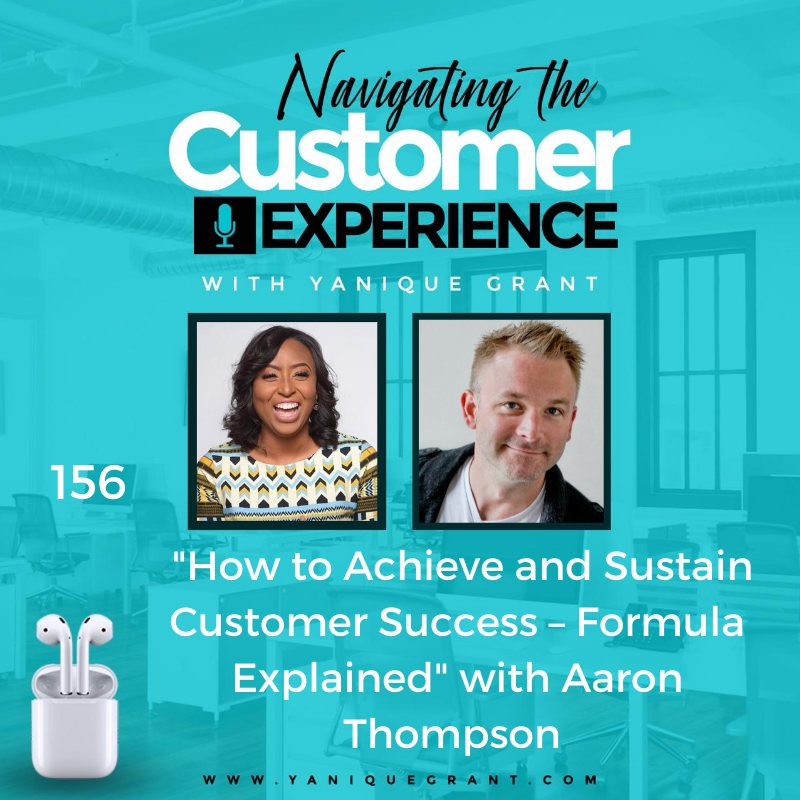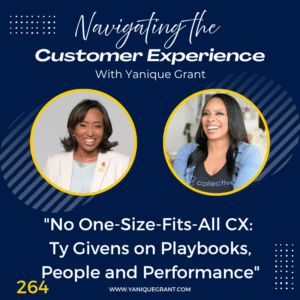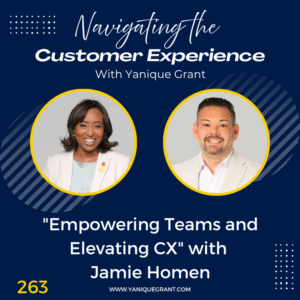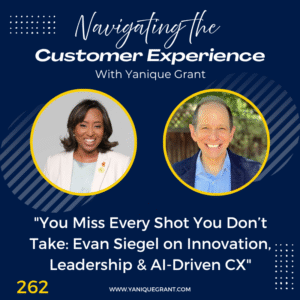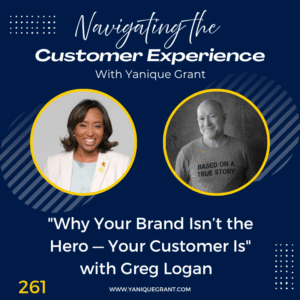Aaron Thompson is a Chief Revenue Officer at SuccessCOACHING, the leading provider of Customer Success training and education. He is a connector, educator and public speaker with over 20 years experience helping companies improve retention rates, increase recurring revenue and recoup customer acquisition costs. Aaron enjoys skiing, kayaking and golfing with his family and friends.
Questions
- Could you share with us a little bit about your journey?
- What customer experience is and then what customer outcomes are and maybe give us a practical example of that.
- Could you maybe share with us maybe one or two drivers that you think can help organizations to try and stay ahead of the curve as it relates to anything that may be impacting them as a result of the pandemic?
- Could you share with us what’s the one online resource, tool, website or app that you absolutely cannot live without in your business?
- Could you also share with us maybe one or two books that have had the biggest impact on you? It could be a book that you read a very long time ago, or even one that you’ve read recently that has impacted you.
- Where can listeners find you online?
- Do you have a quote or saying that during times of adversity or challenge, you’ll tend to revert to this quote; it kind of helps to keep you on track or get you back on track if for any reason you got derailed. Do you have one of those?
Highlights
Aaron’s Journey
Aaron shared that every job he’s had his entire life has been customer facing. The first job he had was working at a health club, helping the members check in as they came in the front door, cleaning the club, etc. And he had a job all the way through high school, all the way through college, all customer facing in different regards, call centers, customer service, little retail here and there. And then about 36 years old, he actually got laid off for the first time in his career. And he had been down a technical track as a software programmer, he had been an implementation consultant, he had been a trainer and instructional designer and most recently was working in customer support at a SaaS company and they laid off about 100 people.
And for the first time he found himself without a job and he didn’t know what he would do next. And so, he started looking at other kind of pivots in his career and thought maybe he would go into a sales track, he looked back into kind of the technical side. And long story short, there was this company in Portland, Oregon, where he’s based that was looking for a new Head of Customer Success, that was going to be tasked with fixing the churn problem. See, they had a 40% year over year churn rate. And obviously, that was preventing them from growing. And so, they wanted to bring someone in to fix that hole in the bucket. And with his support background, he was able to get that job. And he tells this story when he does my classes now and his certifications in customer success.
His first day as the Head of Customer Success, he came in and again, he’s tasked with fixing this churn problem. And he thinks he knows what customer success is at this point, it’s like support on steroids or kind of account management 2.0.
And he came in on day one as the head of CS and he thinks, “Well, you know, what I’ve never actually Googled “What is customer success?” And long story short, he finds the industry, the technology players, the books, the authors, Jeanne Bliss and CCO 2.0 is really critical at the beginning of his development, of his strategy. And so, in a 12 month window, he was able to go and create his own customer success strategy, implement that strategy at that company, and take a 40% churn rate down to 8% in 12 months, by really doing some really foundational customer success practices, and starting to really, do quote unquote, customer success, not just customer support.
And so, at that point, he actually exited that company and founded his first company and at 38 years old, he became an entrepreneur for the first time, and not exactly how he would advise his son to do it. A seven year old son at 38 years old, to just kind of take that leap of faith, but alas, that’s what he did. And he was an independent consultant, implementing that same strategy at some other SaaS companies. And then he met Todd and Andrew, the co-founders of SuccessCOACHING and they had the beginnings of this certification concept. And they were looking for another partner; he was kind of a lone wolf looking for a pack. And long story short, the three of them now own this business https://successcoaching.co/ and they have 4 levels of fully accredited certification in the discipline of Customer Success.
They work with B2B enterprise companies all around the world through an online learning management system. And then they also deliver live events. As their Chief Revenue Officer, he get to travel around, well, pre COVID, he got to travel around and do a lot of keynotes and meet with people in person. And for the last 18 months or so, he’s been doing the same thing, but virtually, primarily into cameras, and then on the podcast like this.
So, he just loves to talk about customer success, he loves to learn from others and find new ways or better ways sometimes of doing things. And then they baked that into a certification. And then now like he said, they have multiple levels of it live, and they’ve certified about 7500 people around the world, they have nearly 10,000 on their platform today. And it’s just been amazing to see this industry grow exponentially year over year, ever since he found it that first day when he Googled, What is customer success?
What is Customer Experience and What are Customer Outcomes
Me: So, one of your formulas for customer success is customer outcomes plus customer experience. So can we break that down, tell us exactly what customer experience is and then what customer outcomes are and maybe give us a practical example of that.
Aaron shared that he loves that formula. When he found that formula, he thought, okay, he can understand this just as a consumer and as having 20 plus years working with customers, it broke it down into such a simplistic approach he could wrap his head around it.
But, the customer’s definition of success and when he says customer, he means human. And he means holistic human who has a personal life and a professional life and if they can impact them on the personal side in a positive way, by way of our professional relationship with them, so save them a little extra time, and they can now get home earlier or get off Zoom earlier, and spend some time with their family will profoundly affect their holistic life in a positive way that transcends their value proposition and B2B relationship, etc.
And so, for these holistic humans, keeping in mind what they want to accomplish, that’s the CO (Customer Outcome).
So, CS (Customer Success) = CO (Customer Outcome) + CX (Customer Experience), the customer’s definition of success, CS. And again, the human, accounts don’t buy things, businesses don’t buy things, make decisions, people do.
And typically speaking, we make business decisions based on personal preference. And so, there is a true blending both from the psychology as well as just building relationships and deepening and maintaining those with humans. And so that person’s definition of success will always come down to what they want to accomplish, that’s the CO (Customer Outcome). So what am I hoping to get whether it’s time savings, and he oftentimes say that outcomes, the CO.
And they really come down to two kinds of outcomes, almost every outcome of any customer is either a pain to relieve or a gain to achieve, it’s one or the other, I either got a pain point I need someone to solve it, or I’m looking to get bigger, faster, stronger, etc.
And so, when we can deliver what they want in terms of that outcome, and then we can do that how they want it, and that’s the CX side.
And so, if we can deliver the same or better outcomes than our competition, and do it by way of the same or better customer experience than our competition, we will have delivered a higher volume of their definition of success.
And so, what that requires of us is to define what that definition looks like for that person, it’s going to be different for your executives, stakeholder, then your subject matter expert, then your end user, then your system administrator, all the different roles have different definitions of success, but our job as CSMs is to define what that is for them, deliver on that, and then demonstrate to them that we’ve done so. That’s where business reviews and reporting and benchmark data etc comes out.
And when we do all three of those, that then leads to renewal and expansion and advocacy from them in this concept of a customer success qualified lead, which is net new business coming into our funnel by way of the customer asset, as opposed to just filling the top of the funnel in sort of typical marketing approaches.
And so, when we do all of this effectively, we can grow our business from the customer asset outwards, we can unlock exponential growth because our acquisition costs go way down and our customer lifetime value goes up, either through renewal expansion, or like he said, advocacy which would be bringing us a net new lead, because we’ve made their lives so wildly successful. That’s kind of the definition.
And that was when he found that, that was a big aha for him, because he thought he can wrap his head around this, he wasn’t much of a math major growing up and so, to have a very simplistic CS = CO + CX, it allowed him to wrap his head around it and really start to use that as the North Star. And it’s what they teach in their level one certification program as well.
Drivers that Can Help Organizations Stay Ahead of the Curve as it Relates to Anything that May Impact Them as a Result of the Pandemic
Me: So, a lot has been happening globally as it relates to different businesses and different industries and I’m sure it’s become even more difficult to achieve customer success because I do believe that COVID has caused the bar to be raised for customer experience, especially for those organizations where there have been delays or I find a lot of companies sometimes are using COVID as an excuse as to why they’re not delivering excellent service. So, could you maybe share with us maybe one or two drivers that you think can help organizations to try and stay ahead of the curve as it relates to anything that may be impacting them as a result of the pandemic?
Aaron stated that that’s a really good point, actually. And he thinks Yanique is absolutely right when it comes to using COVID and quarantine, and everything that happened in March of 2020, as almost a cop out now. He feels like any company that is still revelling in, “Oh, well, we’re still trying to figure out what the future looks like.”
And really kind of harkening to those early days of COVID, he genuinely just thinks it’s a cop out at this point. Because we’ve been in it for pushing two years now and if you can’t iterate, adjust, adopt new ways of doing things within two years, that says something about your company well beyond just this particular instance of COVID, and those early days of quarantine.
But the good companies, the agile companies, and he see this all the time. He watches Shark Tank a lot being an entrepreneur, he loves that show. And entrepreneur, after entrepreneur comes onto the carpet and tells their story about brick and mortar, this kind of products, direct to consumer, and then immediately having to shift and do that digital transformation to be completely digital because there was no other way to sell their products. And many of them were able to thrive in that scenario because of their ability to iterate and adopt.
He thinks it’s probably trickier, he doesn’t know if it’s easier or harder for an early stage versus the later stage company, because you have more resources later stage, of course, as well. But he thinks that’s the key is really making that digital transformation over to direct to consumer, if that’s your business model. And if it’s B2B, you still had to make a digital transformation, he’s not going to be flying and taking you to dinner, and doing a business review in a boardroom with you, he’s going to do it on Zoom and becoming adept at that, and really being able to pivot into that.
Like their business, they had the same problem. He was actually in London on March 12, 2020, speaking at a customer conference. It was crazy. And so, he’s flying from Seattle to London and then he’s going to do a keynote in London and a level one certification while he’s there. And then he’s going to hit New York City on his way back for the level one certification and then he’s going to go home to Portland where he lives. And as he’s getting on the plane from Seattle to London, this is March 9th, that’s probably more like March 7th of 2020. His contact in New York emails him and says, “I’m sorry, we have to cancel the event because we just can’t host people in one place.”
And he thought this is crazy. Like what are you talking about? This is nuts. What do you mean? you can’t bring people together like this, it’s just insane.
And so, he said, alright and he gets on the plane from Seattle to London now without needing to stop in New York on his way home. So he didn’t have a direct flight back yet. And he’ll always remember this Instagram post he made that day where it was the weirdest feeling to get on a plane headed out of country during a global pandemic without a return flight figured out yet. It was completely insane.
So he goes and he does the London events and about 25% of the attendees for this customer conference in London, about 25% actually came, 75% of them, their company said you can’t go, a lot of the speakers had to pivot to a Zoom delivery, the conference company, Congress Geeks out of Israel did an amazing job of pivoting so that the speakers could do it virtually on Zoom, but he was there anyway. And so, he went ahead and did it.
And on March 13, he flew home and they had on Monday, the following Monday, the 13th was the Friday was when he was supposed to do his New York event and he immediately just pivoted to a virtual delivery. And they sent everybody a Zoom link and said, “All right, well, you’re home. Now, I’m home. Let’s see how this goes.” And now here we are 18 months later, that’s how we will do it forever now.
Because he no longer has to take the time out of office to travel, he no longer has to find people in one given city; he can sell tickets around the world for any given event. They actually get more attendance and have a lower overhead for their business and so their margins went up and it’s a delivery mode that they will forever do now, it’s not to say he’s not going to pick and choose different places to go in person. But they had to do that on a dime. And luckily, they were uniquely positioned, he thinks, to be able to make that digital transformation, literally overnight. And not every company could do that. But he thinks there’s a lot of companies that have just used it as a cop out and haven’t adopted this new world and kind of keep waiting for things to quote, go back to normal, as opposed to understanding that this is the new normal, and then using this to actually improve their customer experience and ultimately their customer success.
And just one more point on this, the difference between customer experience and customer success in that formula. Obviously, the CX is part of the CS formula, but how he likes to think of it and he did a keynote actually not very long ago on this. The customer experience is about the journey, it’s about everything they do from the top of your funnel in marketing through the sales channels, to everything with on boarding and optimization and renewals, procurement, how easy it is to pay you, etc, etc, etc. All of the things of the journey from soup to nuts, from start to finish, that’s CX it’s all about the journey.
Customer Success is about the destination. It’s about did we get you what you want, how you want it, and that how you want it is the CX side.
And so, he thinks a lot of companies haven’t focused on that journey well enough and said, alright, now that we live in this COVID world, what can we do?
How can we differentiate ourselves from a customer experience perspective?
While still delivering the same or better outcomes than our competition, iterating on the CX side is what ultimately creates the winners coming out of this pandemic.
And then, he doesn’t like to say losers, but the not winners coming out of the pandemic. And so, he thinks that’s a really good point and a good question. And that’s a very long answer but he thinks at this point, if you haven’t adopted or you’re not in the process of adopting to this new life, this new way the world works, you’re not going to succeed maybe how you did before the pandemic, and certainly not as well as the competition if they are able to iterate and adopt this new way of life better.
App, Website or Tool that Aaron Absolutely Can’t Live Without in His Business
When asked about an online resource that he cannot live without in his business, Aaron stated that that’s a good question. So much of their business is online; they have their learning management system and that’s obviously where they make revenue is selling access to that for people to become certified. The typical collaboration tools are very critical in their business; they run a pretty lean shop and so, to be able to use something like Slack that is just so widely adopted by this point.
Zoom he thinks would probably be one that he would be chagrined to not include it because he’s on it almost all day long now. There’s this new product, actually, that’s super fascinating and they’re going to be rolling this out as part of their live virtual events. It’s called Class and it’s built on top of Zoom, but it creates a true classroom experience, but virtually and so there’s a ton of functionality in there and they’re just getting started, they’re looking to roll this out for their business in Q1, probably mid Jan. But that’s one that’s actually really intriguing.
You talk about a company that’s been built in the pandemic, these founders, similar to rocketlane, these founders saw an opportunity, they saw this pandemic as an opportunity not to take advantage of people, but to capitalize on in a positive way.
There are new pain points; there are new outcomes that people are going to have out there. How can we deliver those outcomes in a enjoyable frictionless customer centric experience, and they can start to build and grow and just like rocketlane, go to market, just in the last 18 months, they went from not existing to now they’re in the market because of this shift in this digital transformation classes a similar approach.
And it’s so super impressive to him as an entrepreneur, when people can see that pain, see that opportunity, that window and just jump at it and then it create something that is as high quality as rocketlane or Class, for example.
Books that Have Had the Biggest Impact on Aaron
When asked about books that have had the biggest impact, Aaron shared that Chief Customer Officer 2.0: How to Build Your Customer-Driven Growth Engine by Jeannie Bliss that was kind of his mantra as the first time he was the head of CS. When he did that Googling and he thought he knew what he was talking about and realized he doesn’t know what customer success is, he better learn, that was a really critical book to doing that. And it’s just so customer centric, the whole concept of earning the right to customer driven growth by making people’s lives better, she really touches on that holistic human concept that he started the podcast with. So, that’s a big one.
He’s trying to think of another one that he’s read that isn’t customer success that has been critical, recently. Over the summer, he was doing the poolside reads, those are always nice. The Technology-as-a-Service Playbook: How to Grow a Profitable Subscription Business from TSIA, it’s been out a long time, he got it for free years ago at a conference, they were just handing them out on a table. That was really big for him to understand the subscription economy and the shift in the business economics from the product era when we sold physical products that would then wear out or require the customer to go back into the market.
And now you shift over to selling the use of the product as a service, thus, it never wears out for the customer now because they never own it. And how do we get a little bit of revenue over time, instead of a whole bunch of revenue up front. Technology-as-a-Service Playbook is really critical as well.
And then there’s some great customer success books out there, there’s also some great leadership books that are out there as well. Another good one that he likes to recommend to people, Red Ocean, Blue Ocean – Blue Ocean Strategy, if you are an entrepreneur or even just have an inkling of an entrepreneurial spirit, that is a really profound book. It’s all about when you find yourself in an ultra competitive environment, that’s a red bloody ocean and you’re really competing on price and kind of having this race to the bottom as they say, how to then innovate, how to pivot, how to adopt a new approach to break out of that and create and find yourself in a blue ocean that is wide open for you to fish within. They use the example of Cirque du Soleil.
And when they found in Cirque du Soleil, they thought why would you ever create a new circus company? That’s insane. There are tons of circuses out there, and a lot of them are getting attacked or protested because of the animal rights and there’s just so much gray area in there. And why would you ever do this? And so, what they do is they go and they create a circus that doesn’t have any animals, it’s all people and all of a sudden they find themselves in this blue ocean and they’ve got Las Vegas and all around the world, they’re selling out these tents, like Barnum and Bailey’s used to do back in the 70s, and 80s. But they’re doing it without any animals; it takes all of the risk away and all they did was just take a very old concept, iterate it, take a new approach to it, and it just exploded worldwide. That’s a perfect example of Red Ocean, Blue Ocean. And he thinks it’s a good business book for anybody, even if you don’t know what you want to do, but you want to be an entrepreneur, it can help you kind of see things in a more innovative way.
Where Can We Find Aaron Online
LinkedIn – Aaron Thompson
Website – https://successcoaching.co/
Quote or Saying that During Times of Adversity Aaron Uses
When asked about a quote or saying that he tends to revert to, Aaron shared that he wished he can show it because it works a little better with visual. So he’ll try to talk it through here. But think of whether it’s customer sentiment, and you’ve just brought on a new customer or a personal relationship, or whatever it is, and everything goes as you expected. And you’ve got a pendulum and whenever they goes as expected, the pendulum kind of swings back and forth, right there in the middle, and everything, is fine, it’s not crazy, it is what it is, no surprises, etc.
And on one end of the spectrum, you have good, happy, pleased, satisfied, whatever. On the other end of the spectrum, you have bad, mad, angry, frustrated, confused, whatever, offended maybe, etc.
And we’re swinging that pendulum right in the middle. And then something bad happens, whatever it is, and it moves this pendulum all the way out to the bad, mad, angry, frustrated side of things. And we find ourselves in that situation, that time of adversity. And in that moment, it’s really easy to ourselves get mad, frustrated, etc, disappointed, etc. And really kind of relish in the moment. And what he tries to do is to remind himself that, “Now I have the opportunity to create enough momentum with that pendulum, that I can move it on to the good, happy, pleased side, to a degree that I never could have had I not found myself on the bad side.”
And so, it’s really just a visual of with, “Every challenge presents an opportunity and when we find ourselves in these challenging times, we just want to focus on the opportunity that’s presented by it, not the challenge that’s presented by it. See these times of adversity as gifts and opportunities to create momentum and swing that pendulum to a place on the good side that it never could have been had you not had to go through that difficult time.” So that’s kind of the like he said, it’s a little easier if he’s got a visual, he’s a big whiteboard person, a lot of webinars, podcasts are a little tough for him. He talks with my hands a lot; nobody can see him right now. But hopefully they can visualize that a little bit, but it’s really just “Every challenge presents an opportunity.”
Please connect with us on Twitter @navigatingcx and also join our Private Facebook Community – Navigating the Customer Experience and listen to our FB Lives weekly with a new guest
Grab the Freebie on Our Website – TOP 10 Online Business Resources for Small Business Owners
Links
- Chief Customer Officer 2.0: How to Build Your Customer-Driven Growth Engine by Jeanne Bliss
- Technology-as-a-Service Playbook: How to Grow a Profitable Subscription Business by Thomas Lah
The ABC’s of a Fantastic Customer Experience
Do you want to pivot your online customer experience and build loyalty – get a copy of “The ABC’s of a Fantastic Customer Experience.”
The ABC’s of a Fantastic Customer Experience provides 26 easy to follow steps and techniques that helps your business to achieve success and build brand loyalty.
This Guide to Limitless, Happy and Loyal Customers will help you to strengthen your service delivery, enhance your knowledge and appreciation of the customer experience and provide tips and practical strategies that you can start implementing immediately!
This book will develop your customer service skills and sharpen your attention to detail when serving others.
Master your customer experience and develop those knock your socks off techniques that will lead to lifetime customers. Your customers will only want to work with your business and it will be your brand differentiator. It will lead to recruiters to seek you out by providing practical examples on how to deliver a winning customer service experience!

